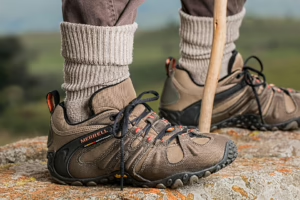Yoga and Muscle Spasms: Can Mindful Movement Help?
Introduction
Muscle spasms are involuntary contractions of a muscle or group of muscles, often resulting in discomfort and pain. These spasms can occur for various reasons, from dehydration to overexertion, and they can affect athletes and non-athletes alike. With the growing interest in holistic health approaches, many individuals are turning to yoga as a means to manage, prevent, and alleviate muscle spasms. This article explores the connection between yoga, mindful movement, and muscle spasms, examining how incorporating yoga into one’s routine may contribute to muscle relaxation and overall well-being.
Understanding Muscle Spasms
Types and Causes of Muscle Spasms
Muscle spasms can be categorized into several types:
- Focal spasms: Affecting a single muscle or small group of muscles.
- Generalized spasms: Involving larger muscle groups or multiple muscle groups, often seen in conditions like seizures.
Common causes of muscle spasms include:
- Dehydration: Loss of fluids and electrolytes can trigger spasms.
- Overuse: Prolonged or intense physical activity may lead to muscle fatigue and spasms.
- Poor circulation: Insufficient blood flow to the muscles can result in cramping and spasms.
- Nutritional deficiencies: Lacking essential nutrients like magnesium, calcium, and potassium can predispose individuals to spasms.
- Nerve compression: Issues such as herniated discs or sciatica can irritate nerves, leading to muscle spasms.
The Role of Yoga
What is Yoga?
Yoga is a centuries-old practice that combines physical postures, breathing techniques, meditation, and ethical principles. It aims to promote physical, mental, and emotional well-being. Traditional yoga emphasizes mindfulness, encouraging practitioners to cultivate awareness of their bodies and minds.
Different Styles of Yoga
There are various styles of yoga, each with unique approaches and benefits. Some popular forms include:
- Hatha Yoga: Focuses on physical postures and breath control.
- Vinyasa Yoga: Involves a flow of postures synchronized with breath.
- Yin Yoga: A slower-paced style promoting deep stretching and relaxation.
- Restorative Yoga: Emphasizes gentle stretching using props for support.
Each of these styles can offer different benefits, and individuals may choose a practice that resonates with their needs and preferences.
How Yoga Can Help with Muscle Spasms
Mindful Movement and Body Awareness
Yoga promotes mindfulness, enabling practitioners to develop a deeper awareness of their bodies. This heightened awareness can help individuals recognize signs of muscle tightness or discomfort before they escalate into spasms. By tuning into the body’s signals, people can modify their activities or practice preventative techniques.
Stretching and Flexibility
One of the primary benefits of yoga is its emphasis on stretching and flexibility. Many muscle spasms result from tight muscles. By regularly incorporating yoga stretches, individuals can:
- Improve flexibility: Increased range of motion may help prevent spasms.
- Enhance muscle relaxation: Stretching promotes blood flow and helps relax tight muscles.
- Balance muscle strength: Yoga encourages the development of balanced muscle strength, reducing the risk of overuse injuries.
Breathing Techniques
Deep, controlled breathing is a fundamental aspect of yoga. Techniques such as diaphragmatic breathing can help activate the parasympathetic nervous system, leading to muscle relaxation and reduced tension. Incorporating breath awareness into yoga practice can assist in alleviating the stress that may contribute to muscle spasms.
Stress Reduction
Stress is a significant factor that can lead to muscle tension and spasms. Yoga provides tools for managing stress, allowing individuals to develop healthier responses to stressors. By fostering relaxation and calmness, yoga may reduce the likelihood of stress-induced muscle spasms.
Posture and Alignment
Poor posture can lead to muscle imbalances and tension, increasing the risk of spasms. Yoga emphasizes alignment and awareness in postures, helping individuals develop healthier postural habits. By strengthening postural muscles and promoting proper alignment, yoga can potentially mitigate the risk of spasms caused by structural issues.
Evidence Supporting Yoga’s Efficacy
Research Studies on Yoga and Muscle Spasms
Several research studies have examined the effects of yoga on muscle spasms and related conditions. For instance, a systematic review published in the Journal of Bodywork and Movement Therapies found that yoga can be effective in reducing muscle pain and tension in individuals with chronic conditions such as fibromyalgia and chronic lower back pain[^1]. Participants reported significant improvements in muscle relaxation and reductions in the frequency of muscle spasms.
Another study published in Pain Medicine highlighted the positive effects of yoga on individuals suffering from chronic neck pain, noting that yoga practice resulted in significant decreases in pain intensity and improved functional ability[^2]. These findings suggest that the holistic approach of yoga—addressing both physical and psychological aspects—can be beneficial in managing muscle spasms and related issues.
Anecdotal Evidence
In addition to research findings, anecdotal evidence abounds in personal testimonies from individuals who have found relief from muscle spasms through yoga practice. Many practitioners have reported experiencing fewer cramps and muscle tightness after committing to a regular yoga routine. Such testimonies reinforce the idea that yoga can be a valuable tool in managing muscle spasms.
Considerations for Integrating Yoga into Your Routine
Choosing the Right Style
Selecting the appropriate style of yoga is crucial for addressing muscle spasms. Those who are new to yoga may benefit from starting with Hatha or Restorative Yoga, which focus on gentle movements. As individuals gain experience, they may explore more dynamic styles like Vinyasa to build strength and endurance.
Qualified Instruction
It’s essential to learn proper yoga techniques from qualified instructors, especially for individuals with a history of muscle spasms or injuries. A knowledgeable teacher can offer guidance tailored to individual needs, ensuring safe practice and preventing exacerbation of conditions.
Listening to Your Body
Practitioners are encouraged to cultivate a sense of self-awareness during yoga sessions. Every body is different, and what works for one individual may not be suitable for another. It’s vital to listen to one’s body and adjust poses as needed, avoiding any movements that provoke discomfort or spasms.
Complementary Practices
Other Mindful Movements
While yoga is effective for many, other mindful movement practices can complement its benefits. These include:
- Tai Chi: A gentle martial art focusing on slow, fluid movements that may enhance relaxation and flexibility.
- Pilates: Emphasizes core strength and flexibility, helping to balance muscle engagement and reduce tension.
Cross-Training and Physical Activity
Incorporating a variety of physical activities can aid in muscle relaxation and prevention of spasms. Activities such as swimming, walking, or cycling can promote cardiovascular health while also allowing for an active lifestyle that reduces the risk of muscle tightness.
Nutrition and Hydration
Maintaining proper nutrition and hydration is crucial in preventing muscle spasms. Consuming adequate amounts of electrolytes, such as potassium and magnesium, through a balanced diet can support muscle health. Staying well-hydrated is equally important, particularly for those engaged in physical activities.
Conclusion
Yoga offers a multifaceted approach to managing and preventing muscle spasms through mindful movement, flexibility, and breath control. Research indicates that regular practice can lead to improvements in muscle relaxation and reductions in tension and discomfort. While yoga is not a panacea, it can serve as a valuable tool within a broader strategy for managing muscle spasms. Individuals are encouraged to explore various styles of yoga and incorporate it into their routines while also considering complementary practices and self-care strategies.
As with any wellness practice, consulting healthcare professionals can optimize the approach to managing muscle spasms and ensure safety during practice. By embracing the philosophy of mindful movement, individuals may find not only relief from muscle spasms but also a path toward greater overall well-being.


























Add Comment